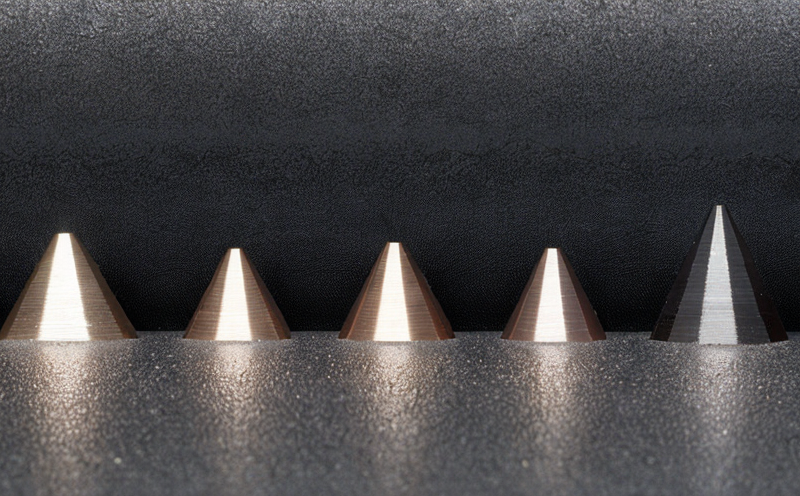Hardness gradient profiling
The Power of Hardness Gradient Profiling Unlocking Material Secrets for Business Success
In todays fast-paced industrial landscape, materials science plays a pivotal role in driving innovation and efficiency across various sectors. From aerospace and automotive to medical devices and consumer goods, understanding the properties of materials is crucial for optimizing performance, reducing costs, and ensuring product safety. Among these essential material characteristics, hardness has emerged as a critical factor influencing a wide range of applications.
Hardness gradient profiling, a sophisticated laboratory service offered by Eurolab, provides businesses with an unparalleled level of insight into their materials behavior under various conditions. By delving into the intricacies of hardness gradients, companies can unlock new opportunities for improvement and growth. In this comprehensive article, well delve into the world of Hardness gradient profiling, exploring its significance, benefits, and applications.
What is Hardness Gradient Profiling?
Hardness gradient profiling involves a precise measurement of material hardness across different regions or areas within a sample. This approach recognizes that materials often exhibit varying levels of hardness, which can significantly impact their performance, durability, and overall value. By analyzing these gradients, researchers and manufacturers gain valuable insights into the microstructure and properties of their materials.
Why is Hardness Gradient Profiling Essential for Businesses?
The advantages of using Hardness gradient profiling are multifaceted and far-reaching
Improved Material Selection With a deep understanding of material hardness gradients, companies can choose the most suitable materials for specific applications, reducing errors and costs.
Enhanced Product Performance By identifying areas where hardness levels may be compromised, manufacturers can optimize their products performance, ensuring they meet or exceed customer expectations.
Reduced Material Waste Accurate hardness gradient profiling enables companies to minimize material waste by optimizing cutting, machining, and forming processes.
Increased Efficiency By streamlining production workflows and reducing the need for rework, businesses can achieve significant productivity gains.
Key Benefits of Hardness Gradient Profiling
Here are some key benefits of incorporating Hardness gradient profiling into your business operations
Advantages
Accurate Material Characterization Unravel the complexities of material hardness gradients with precise measurements.
Process Optimization Streamline production workflows by identifying areas where hardness levels may impact performance.
Reduced Scrap and Rejection Rates Minimize material waste and optimize cutting, machining, and forming processes.
Enhanced Quality Control Ensure products meet or exceed customer expectations through robust quality control measures.
Cost Savings Reduce costs associated with rework, scrap, and wasted materials.
Applications
Hardness gradient profiling has far-reaching implications across various industries
Aerospace and Defense Optimize material selection for aircraft and spacecraft components, ensuring superior performance and safety.
Automotive Improve engine efficiency, reduce emissions, and enhance overall vehicle performance through optimized material selection.
Medical Devices Ensure the biocompatibility and efficacy of medical implants and devices by analyzing hardness gradients.
Consumer Goods Enhance product durability, appearance, and user experience by selecting materials with optimal hardness levels.
QA Your Hardness Gradient Profiling Questions Answered
Weve compiled a comprehensive QA section to address your most pressing questions about Hardness gradient profiling
Q1 What is the purpose of Hardness gradient profiling?
A1 Hardness gradient profiling provides an in-depth understanding of material hardness levels across different regions or areas within a sample, enabling businesses to optimize material selection, product performance, and manufacturing processes.
Q2 How does Eurolab perform Hardness gradient profiling?
A2 Our team uses state-of-the-art equipment and expert techniques to measure material hardness gradients with unparalleled precision. We tailor our approach to meet the unique needs of each client and project.
Q3 What are the benefits of using Hardness gradient profiling in my business?
A3 By incorporating Hardness gradient profiling into your operations, youll enjoy reduced material waste, improved product performance, enhanced quality control, and increased efficiency. These advantages will ultimately lead to cost savings and improved competitiveness.
Q4 Can I integrate Hardness gradient profiling with existing processes?
A4 Yes! Our experienced team is happy to collaborate with your organization to seamlessly integrate Hardness gradient profiling into your existing workflows.
Join the Eurolab Community
At Eurolab, were dedicated to empowering businesses with cutting-edge laboratory services that drive innovation and efficiency. If youre ready to unlock the secrets of your materials through Hardness gradient profiling, contact us today to schedule a consultation. Our team will be delighted to guide you on this transformative journey.
Hardness gradient profiling is an essential tool for companies seeking to optimize material selection, product performance, and manufacturing processes. By embracing this sophisticated laboratory service, businesses can
Unlock Material Secrets Gain unparalleled insight into material hardness gradients.
Improve Efficiency Streamline production workflows and reduce waste.
Enhance Product Performance Optimize products for superior performance and durability.
Dont miss out on the opportunity to revolutionize your business with Hardness gradient profiling. Reach out to Eurolab today and start uncovering the full potential of your materials.




